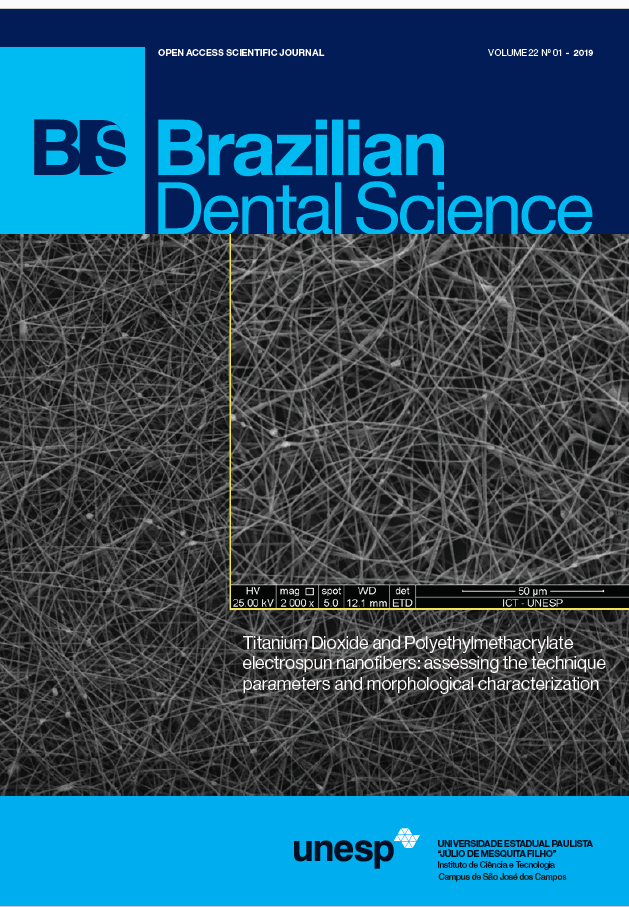Proximal retention grooves may increase early fracture strength of ART restorations
DOI:
https://doi.org/10.14295/bds.2019.v22i1.1682Abstract
Objective: To evaluate the fracture resistance (RF) of Class II Glass-ionomer Cement (GIC) ART restorations with and without proximal retentions. Material and Methods: 20 freshly extracted human molars were used. Forty (40) standard Mesial-Occlusal (MO) and Distal-Occlusal (DO) preparations (20 for each material) were performed with a 245 bur. The unprepared surfaces of the teeth were protected with nail polish and the specimens submerged in 0.5Mol EDTA solution, pH 7.4 for 8h under stirring. The preparations were finished with dentine spoons and 50% received proximal retention with # 3 excavators. 20 cavities were restored with Chemfil Rock (10 with retention and 10 without retention) and 20 cavities were restored with Equia Fil (10 with retention and 10 with no retention) and were stored in an oven at 37ºC and 100% relative humidity for 24h and submitted to axial compression loading in Test Machine - EMIC at a rate of 0.5 mm / minute, until restoration fracture occurred. The values were analyzed by two-way ANOVA (p<0.05). Results: ChemFil Rock presented 300.84 (69.20) (without retention) and 361.70 (81.08) (with retention) and Equia Fil showed 314.60 (69.97) (without retention) and 366.67 (103.38) (with retention). Data obtained with retention were statistically superior to those obtained with non-retained ART restorations (p=0.014). No statistical differences were detected between materials (p=0.761). Conclusion: Retentive grooves improved fracture resistance of Class II GIC ART restorations.
Keywords
Dental materials; ART; Glass ionomer cements.
Downloads
Downloads
Published
How to Cite
Issue
Section
License
Brazilian Dental Science uses the Creative Commons (CC-BY 4.0) license, thus preserving the integrity of articles in an open access environment. The journal allows the author to retain publishing rights without restrictions.
=================




























